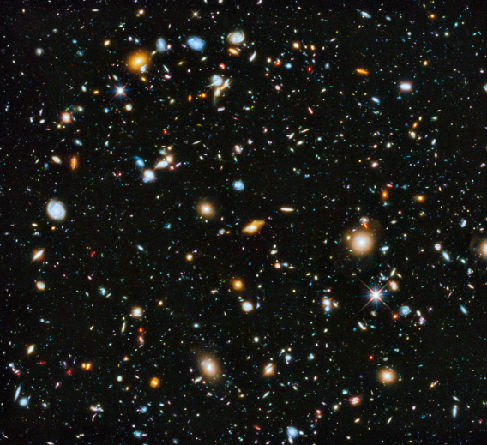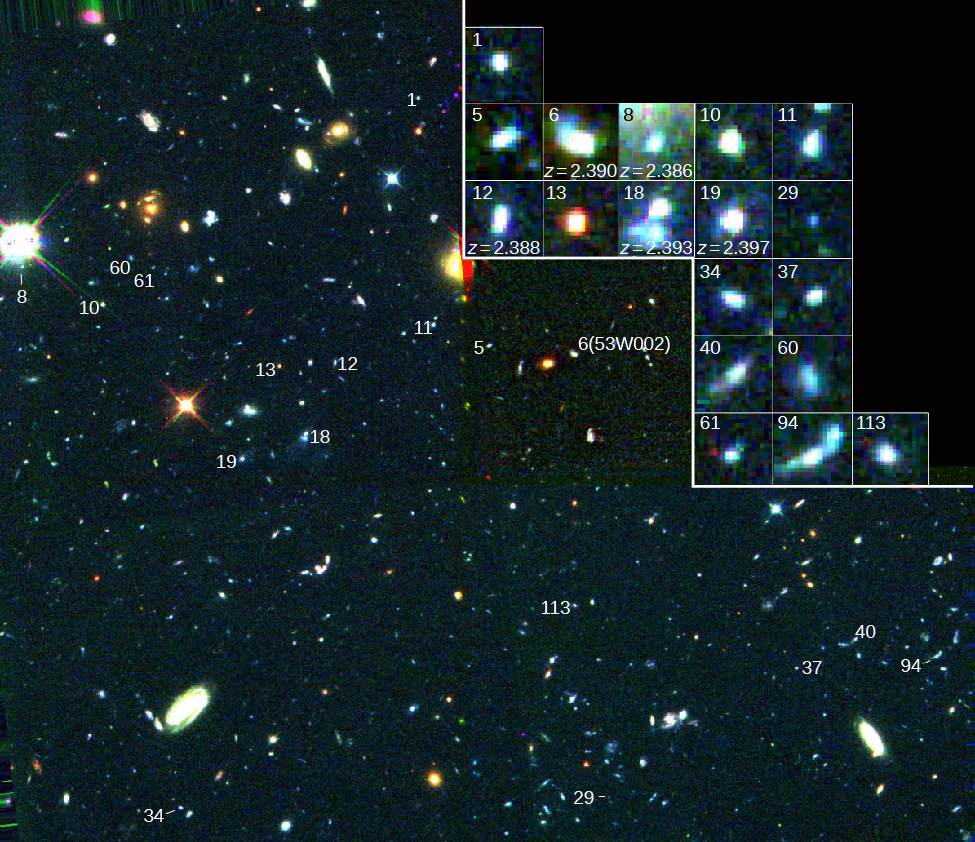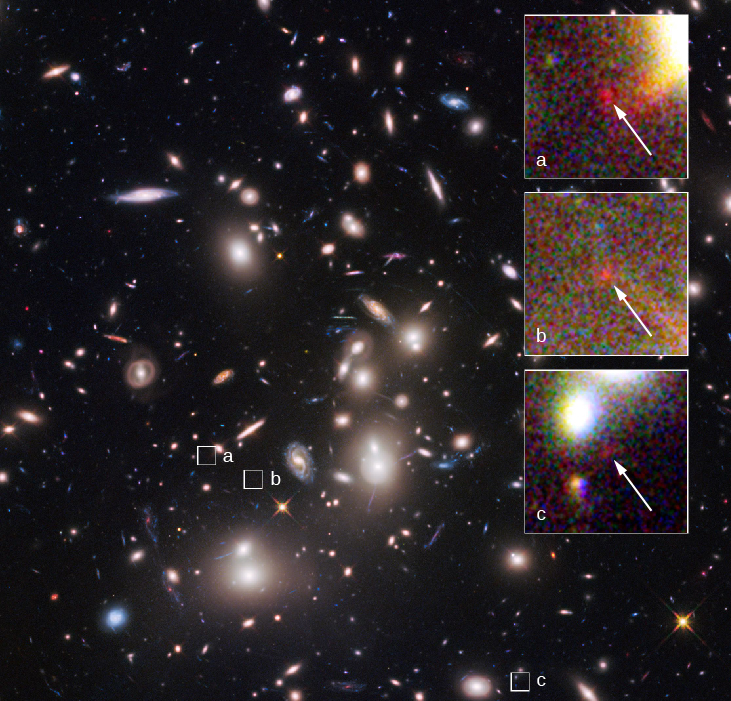| << Chapter < Page | Chapter >> Page > |

Although we do not have spectra for most of the faint galaxies, the Hubble Space Telescope is especially well suited to studying their shapes because the images taken in space are not blurred by Earth’s atmosphere. To the surprise of astronomers, the distant galaxies did not fit Hubble’s classification scheme at all. Remember that Hubble found that nearly all nearby galaxies could be classified into a few categories, depending on whether they were ellipticals or spirals. The distant galaxies observed by the Hubble Space Telescope look very different from present-day galaxies, without identifiable spiral arms, disks, and bulges ( [link] ). They also tend to be much clumpier than most galaxies today. In other words, it’s becoming clear that the shapes of galaxies have changed significantly over time. In fact, we now know that the Hubble scheme works well for only the last half of the age of the universe. Before then, galaxies were much more chaotic.

It’s not just the shapes that are different. Nearly all the galaxies at distances greater than 11 billion light-years—that is, galaxies that we are seeing when they were less than 3 billion years old—are extremely blue, indicating that they contain a lot of young stars and that star formation in them is occurring at a higher rate than in nearby galaxies. Observations also show that very distant galaxies are systematically smaller on average than nearby galaxies. Relatively few galaxies present before the universe was about 8 billion years old have masses greater than 10 11 M Sun . That’s 1/20 the mass of the Milky Way if we include its dark matter halo. Eleven billion years ago, there were only a few galaxies with masses greater than 10 10 M Sun . What we see instead seem to be small pieces or fragments of galactic material ( [link] ). When we look at galaxies that emitted their light 11 to 12 billion years ago, we now believe we are seeing the seeds of elliptical galaxies and of the central bulges of spirals. Over time, these smaller galaxies collided and merged to build up today’s large galaxies.
Bear in mind that stars that formed more than 11 billion years ago will be very old stars today. Indeed when we look nearby (at galaxies we see closer to our time), we find mostly old stars in the nuclear bulges of nearby spirals and in elliptical galaxies.

What such observations are showing us is that galaxies have grown in size as the universe has aged. Not only were galaxies smaller several billion years ago, but there were more of them; gas-rich galaxies, particularly the less luminous ones, were much more numerous then than they are today.
Those are some of the basic observations we can make of individual galaxies (and their evolution) looking back in cosmic time. Now we want to turn to the larger context. If stars are grouped into galaxies, are the galaxies also grouped in some way? In the third section of this chapter, we’ll explore the largest structures known in the universe.
When we look at distant galaxies, we are looking back in time. We have now seen galaxies as they were when the universe was about 500 million years old—only about five percent as old as it is now. The universe now is 13.8 billion years old. The color of a galaxy is an indicator of the age of the stars that populate it. Blue galaxies must contain a lot of hot, massive, young stars. Galaxies that contain only old stars tend to be yellowish red. The first generation of stars formed when the universe was only a few hundred million years old. Galaxies observed when the universe was only a few billion years old tend to be smaller than today’s galaxies, to have more irregular shapes, and to have more rapid star formation than the galaxies we see nearby in today’s universe. This shows that the smaller galaxy fragments assembled themselves into the larger galaxies we see today.

Notification Switch
Would you like to follow the 'Astronomy' conversation and receive update notifications?